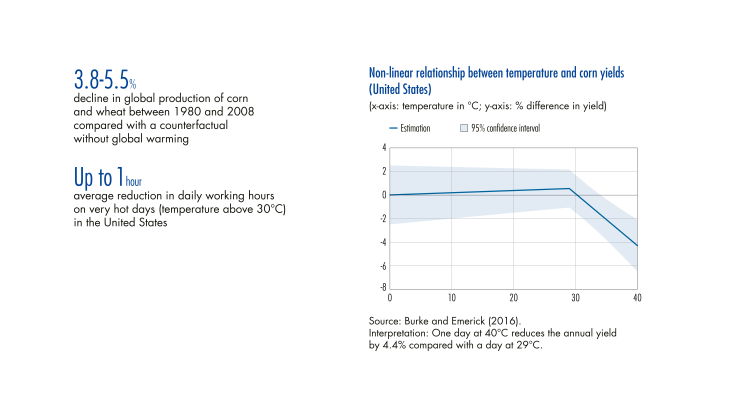1 Physical risks, a major and pressing challenge for certain economic activities
In recent decades, numerous scientific studies have provided unequivocal confirmation of the pace and scale of climate change. The Sixth Assessment Report by the Intergovernmental Panel on Climate Change (IPCC, 2021) strongly reasserts in its first volume that human activities have played a major role in driving global warming, and highlights the magnitude and above all the spectacular acceleration of climate change. As well as pointing to the warming of the atmosphere and oceans, the report states that “evidence of observed changes in extremes such as heatwaves, heavy precipitation, droughts, and tropical cyclones, and, in particular, their attribution to human influence, has strengthened since the Fifth Assessment Report”.
What 30 years ago might have seemed like a medium term risk and challenge is now clearly recognized as a pressing threat that is being brutally felt by all. The imbalances and disruption caused by global warming – especially the increased frequency of “extreme” climate events – are having immediate and escalating effects on human activity (Dell et al., 2014; Lesterquy, 2021), and tackling them poses challenges. The summer of 2021 illustrated this.
In this article, we examine the physical risks that are weighing increasingly on certain economic activities and look at the ways in which those sectors are liable to adapt – or not – in order to mitigate the most damaging consequences. Various forward looking reports map and describe the climate risks firms need to take into account, and list the initial measures that they have implemented (Ademe, 2019; McKinsey, 2020; CERDD, 2021; CCI, 2021). However, to the best of our knowledge, these institutional reports do not fully exploit the richness of the academic literature on the subject. The aim of this article is therefore to enrich the debate with the main lessons drawn from the literature.
2 Some sectors are already being impacted by the physical risks
In the medium to long term, climate change poses major challenges to our economies: sustainability of certain sectors, transition to sustainable and less polluting energy sources, replacement of industrial components or processes that emit high levels of greenhouse gases (GHGs), stranded assets, etc. The transformations needed to limit global warming – to the extent possible – are huge. Nonetheless, the size of these medium term challenges should not distract from the fact that climate change is already having an impact on economic activity.
[to read more, please download the article]
